Issue #114 of Singletrack Magazine, we reviewed three bikes as part of our Killer Hardtail group test
Kona is a brand that has been doing the hardtail very well for a long time. It’s delivered some cracking entry-level bikes and top-flight cross-country race machines over its 29-year history, but the brand is better known for its approach to producing capable hardtails that place the primary focus on fun, rather than on price or weight. And with a knack for reading the mountain bike market like a tarot card, Kona has also made a bit of a habit for setting wider industry trends in its wake.
Take the original Honzo that was launched in 2012 – a burly steel 29er hardtail that was anything but cross-country. The Honzo wasn’t quite the first rad 29er hardtail to hit the market (the Banshee Paradox and Canfield Yelli Screamy preceded it), but Kona did a lot to win over non-cross-country riders to the big wheels. And boy did it bring the rad to the 29er party.
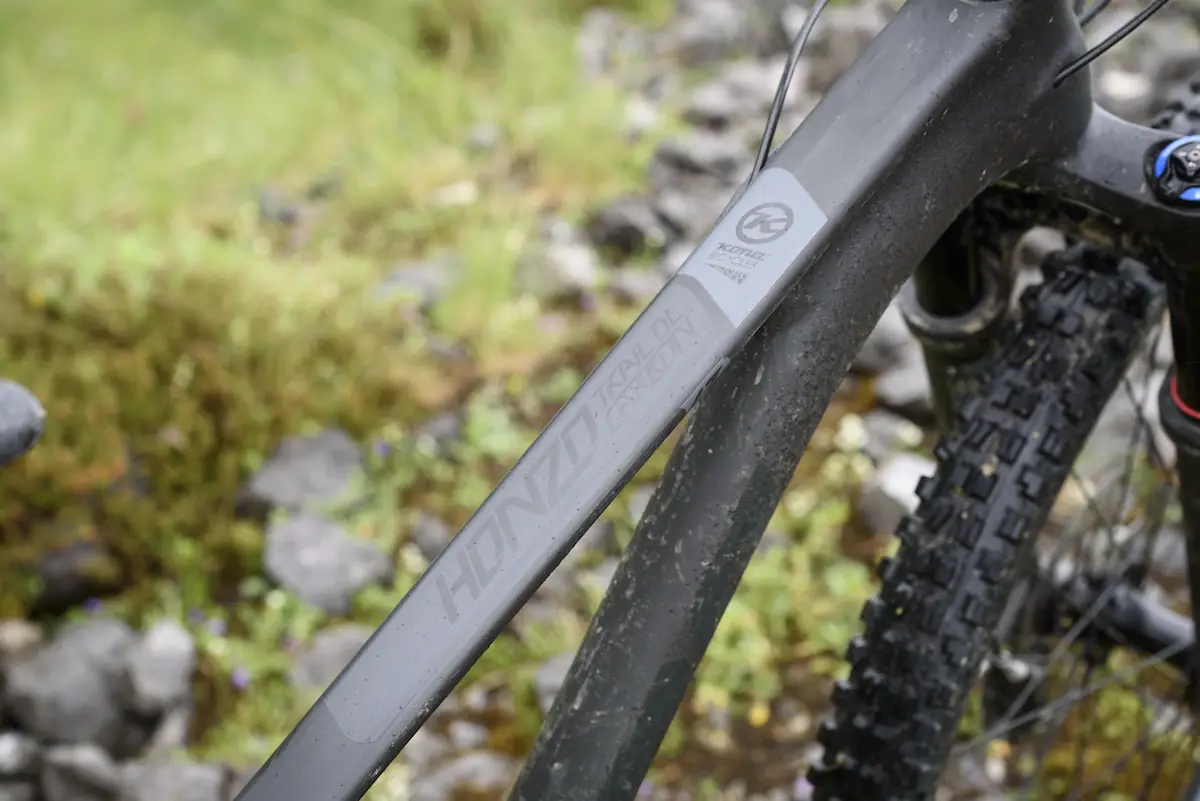
With its slack head angle, tight 420mm chainstays and burly parts spec, the Honzo quickly became the benchmark for other big wheel trail bikes. It was heavy and somewhat under-geared with its 1×10 drivetrain, but it was mighty tough and mega fun for ripping apart singletrack. Its addictive ride quality set the bar for 29er trail bikes, and many other brands are still trying catch on today.
For 2017, the Honzo is now exclusively produced in alloy and carbon options. There are seven models in total (four alloy and three carbon), and all are built around the same geometry with a 120mm travel fork. The black stallion here is the top-end Honzo Carbon Trail DL. It’s the first Honzo to be made out of carbon fibre, and it stands as Kona’s flagship carbon 29er hardtail.
Latest Singletrack Merch
Buying and wearing our sustainable merch is another great way to support Singletrack
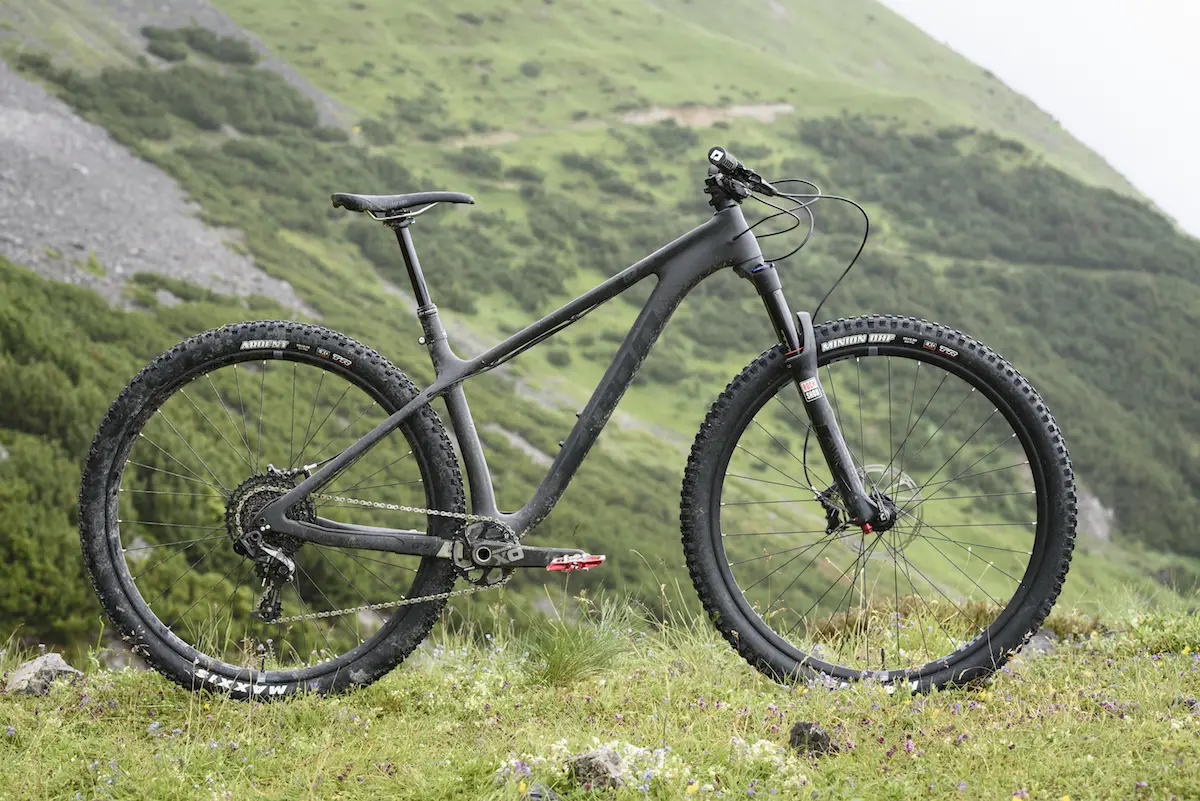
The Bike
For a bike that is black-on-black-on-black, the Honzo is a rather eye-catching machine, and one that confuses many riders at first. With such a short back-end and burly fork, it looks like it belongs at a slopestyle course rather than a trailhead. Having said goodbye to the traditional cross-country race hardtail with the last King Kahuna model back in 2015, Kona has instead decided that carbon hardtails shouldn’t be limited to racing. The Honzo is lightweight and expensive yes, but it’s a bike that’s been hard-wired into silly mode.
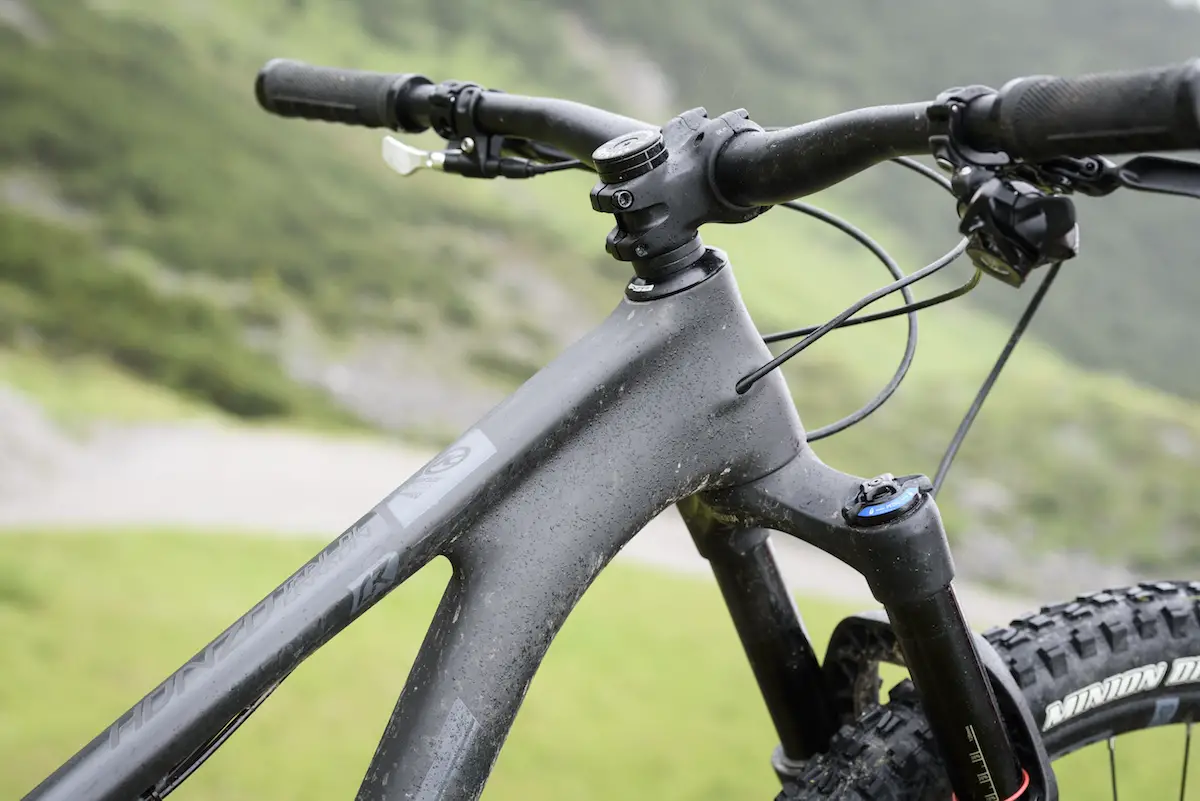
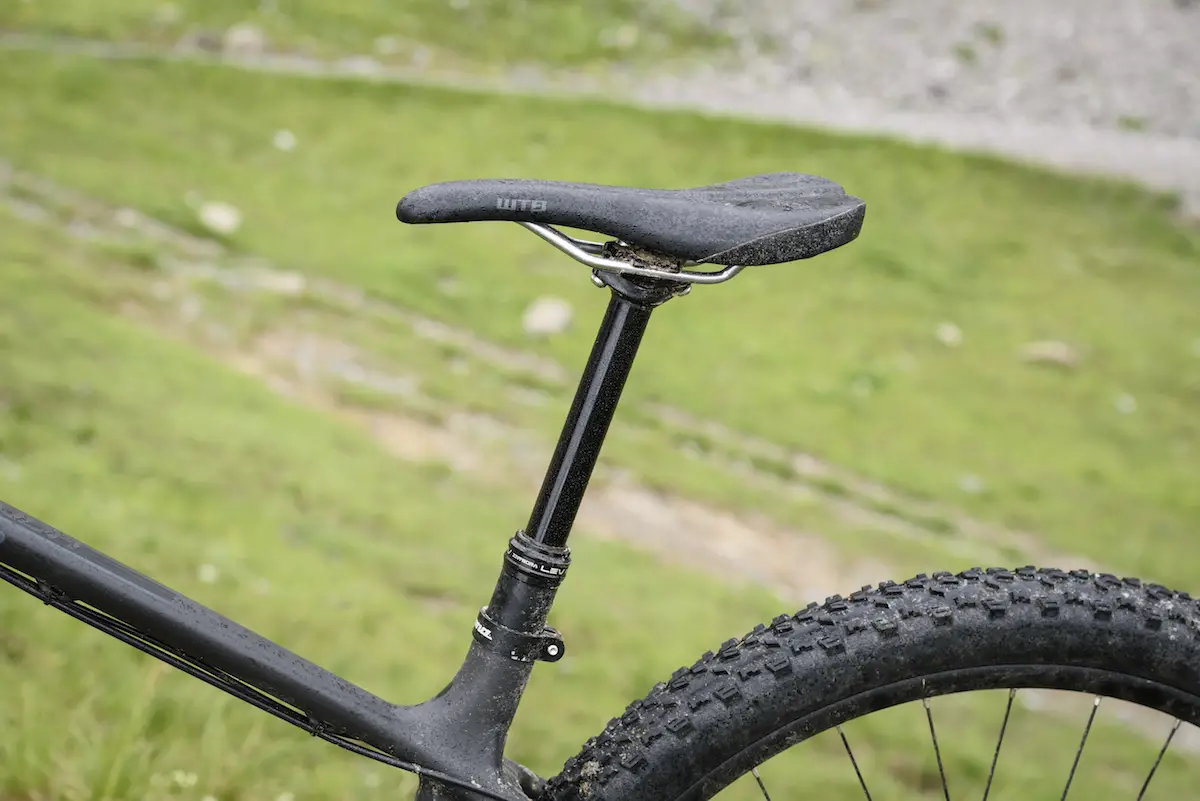
The gorgeous frame is full of sleek and organic shapes, with svelteness where possible, and oversized chunk where it counts. A 92mm wide PF92 bottom bracket shell provides a stable platform for power delivery from the pedals, while a gargantuan headtube junction ensures loads of frontal stiffness. Like the BB, the headtube houses press-in bearing cups.
The frame is built around a 120mm travel fork, which in the case of the DL model is a RockShox Pike RCT3. There’s Boost hub spacing front and rear, and the conventionally laced wheels are built with WTB Asym i29 rims that use a generous 29mm internal width. Those are matched up to a burly Minion DHF tyre up front, and a faster-rolling Ardent out back.
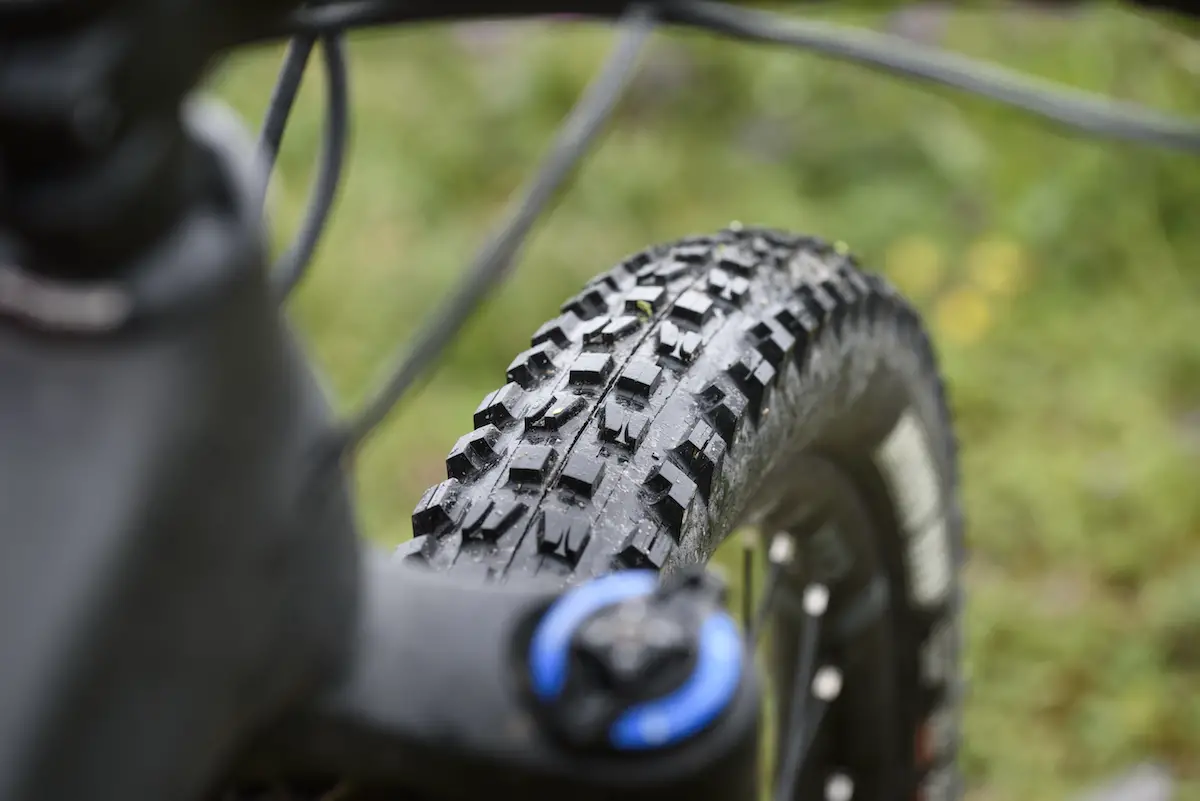

Along with the fork and wheelset, everywhere you look on the Honzo CR Trail DL just bellows capability. Four-piston SRAM brakes deliver the power with a 180mm rotor on the front, and Kona has specced a KS dropper post for slamming the saddle out of the way when things get wild and woolly.
Just like the original steel Honzo, the carbon frame is 1x only. Along with the Boost offset drivetrain and low-hanging bottom bracket, that’s allowed Kona to build in some seriously short chainstays – 415mm to be precise. Outrageously short! To achieve such a number, the seat tube curves around the rear wheel to tuck it in as closely as possible. There isn’t a load of mud clearance, and the frame is definitely not 27.5+ compatible. Apparently the geometry compromises weren’t worth it for Kona’s designers, and so the Honzo is a purebred 29er.
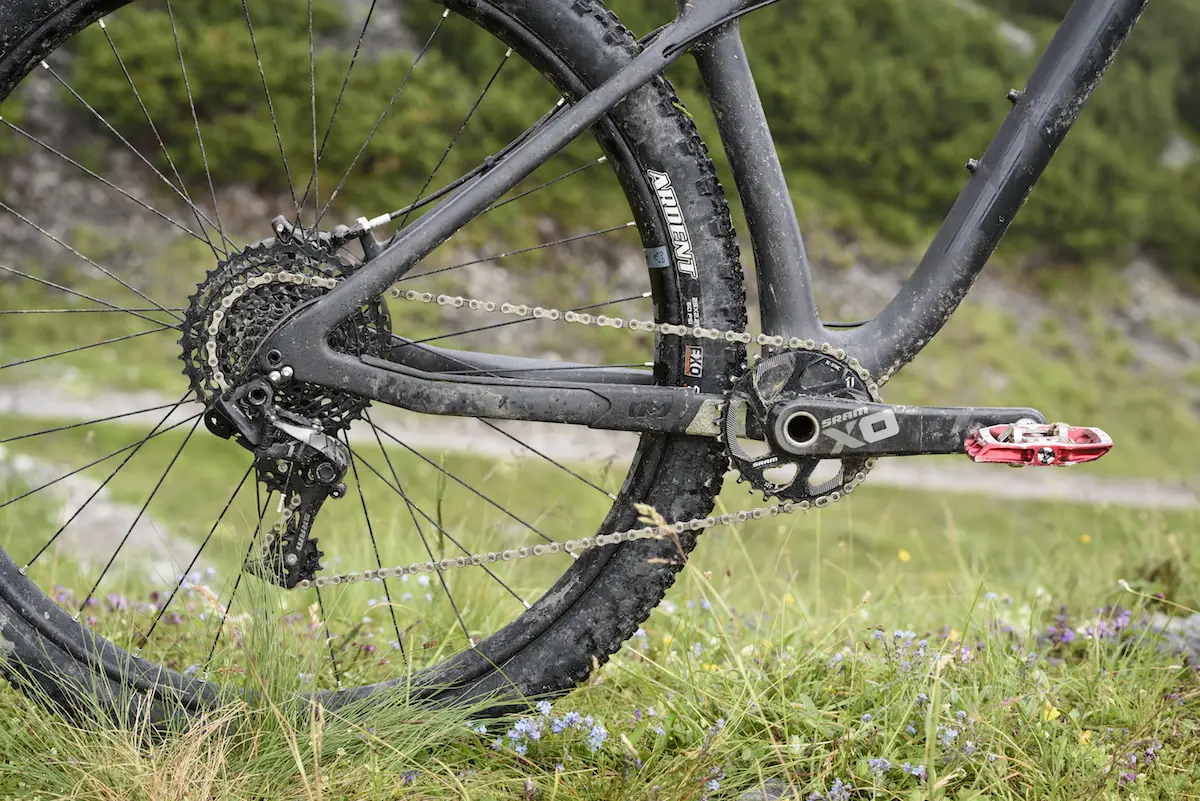
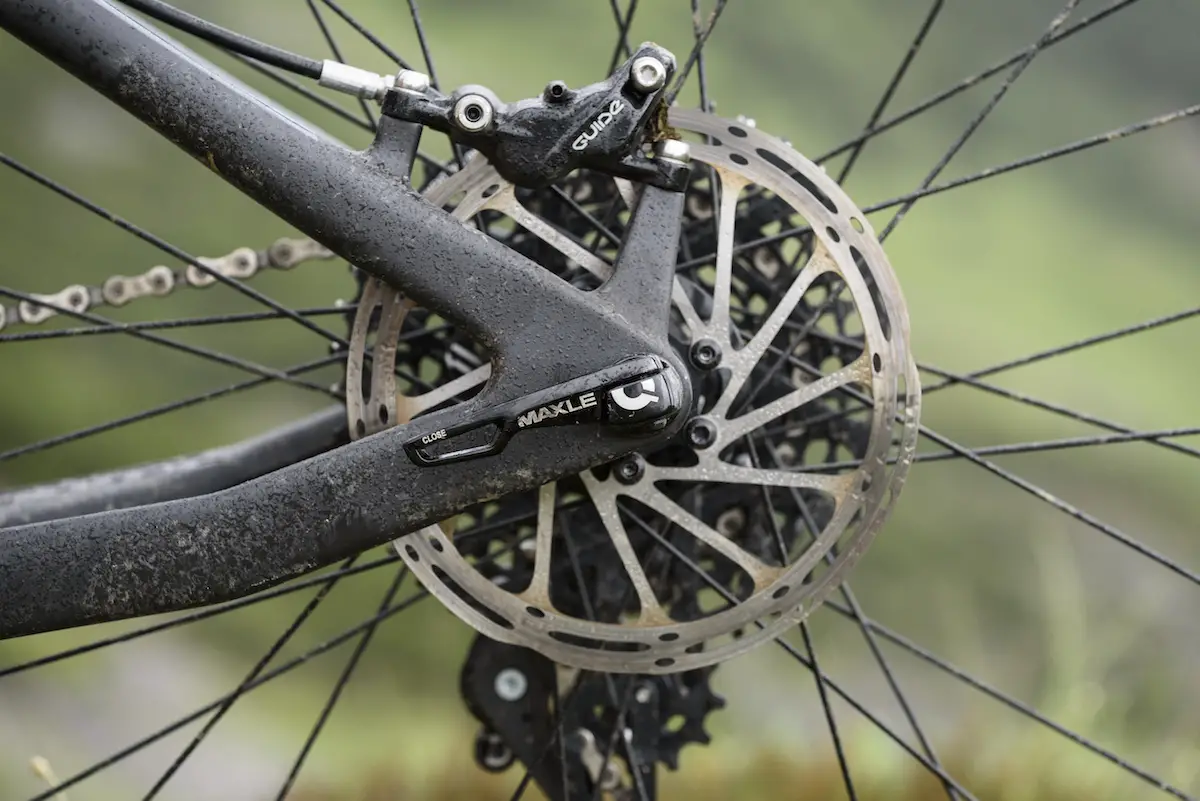
Other numbers on the Honzo are similarly boundary-pushing. A 68° head angle relaxes handling at speed, while each frame size is gifted a substantial wheelbase length that’s delivered by a very roomy front centre. On the Medium test bike, you’re looking at a 450mm reach, which to put it in perspective, is just 5mm short of the reach of an XL Nukeproof Scout 290. That is long by anyone’s book, and particularly when we’re talking about a lightweight race-capable hardtail like this. Short at the back and long up front? You bet – and then some.
Kona has also built the Honzo with a compact seat tube that offers plenty of standover clearance with room for an upgrade to a longer-travel dropper post. Other practical details include external routing for the rear brake hose, and liberal use of vibration-deadening rubber inside the rear triangle.
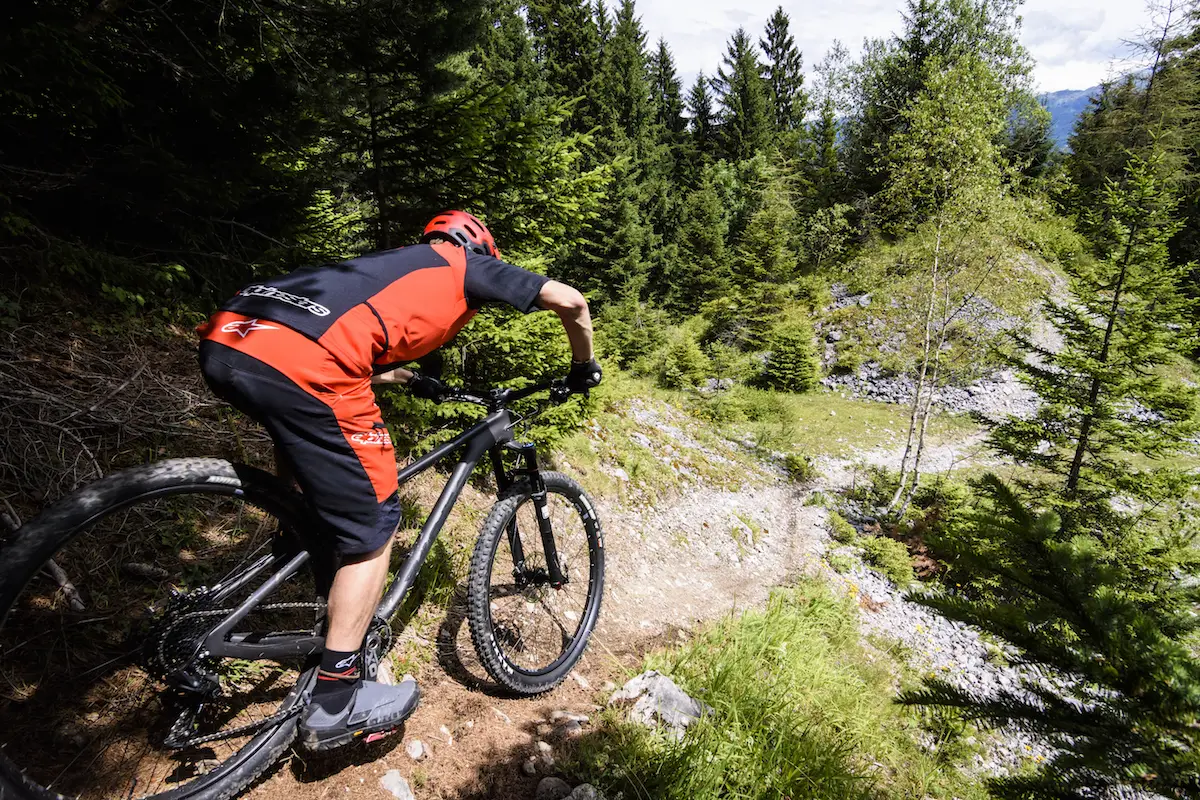
The Ride
Unanimous amongst all testers was praise for the Honzo’s riding position. It’s well proportioned with the tidy 45mm stem and 760mm wide riser bars keeping you stretched out like other cross-country bikes, but with a much more stable ‘we got this!’ vibe. Likewise, the ribbed ODI grips and KS Southpaw lever are welcome control-boosters for high-speed action.
As expected from the lightest and most expensive bike on test, the Honzo requires the least effort to get moving. It’s fast and energetic, and acceleration out of the stiff carbon frame and tight back end is insanely good. The chunky treads mean it isn’t as quick as a traditional race bike, but a tyre swap is all you need to get set up for a weekend of cross-country racing.
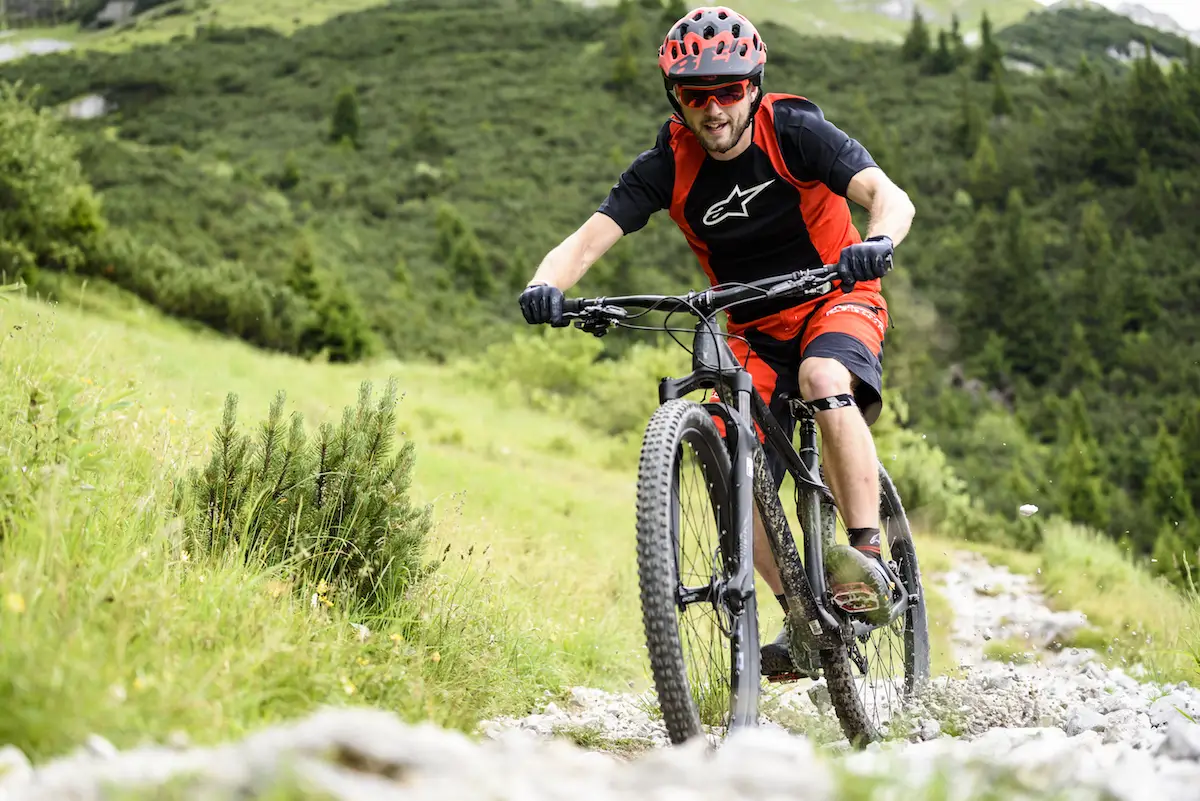
Once the trail gets loose and tricky though, the added traction is welcome and the Honzo digs deep to climb high. The static 75° seat angle is steep, and it gets steeper as the fork sags into its travel, helping you to push your weight forward for punching up the climbs. Steering remains steady even without a long stem and steep head angle.
For my 70kg riding weight, I ran 18–21psi in the tyres. The wide WTB rims help to make lower pressures possible with less chance of casing roll through the corners, and overall comfort was very good from the carbon frame. Compared to the alloy Nukeproof and steel Trillion, the Honzo was the most effective at shearing the edges off sharp ledges on the trail.
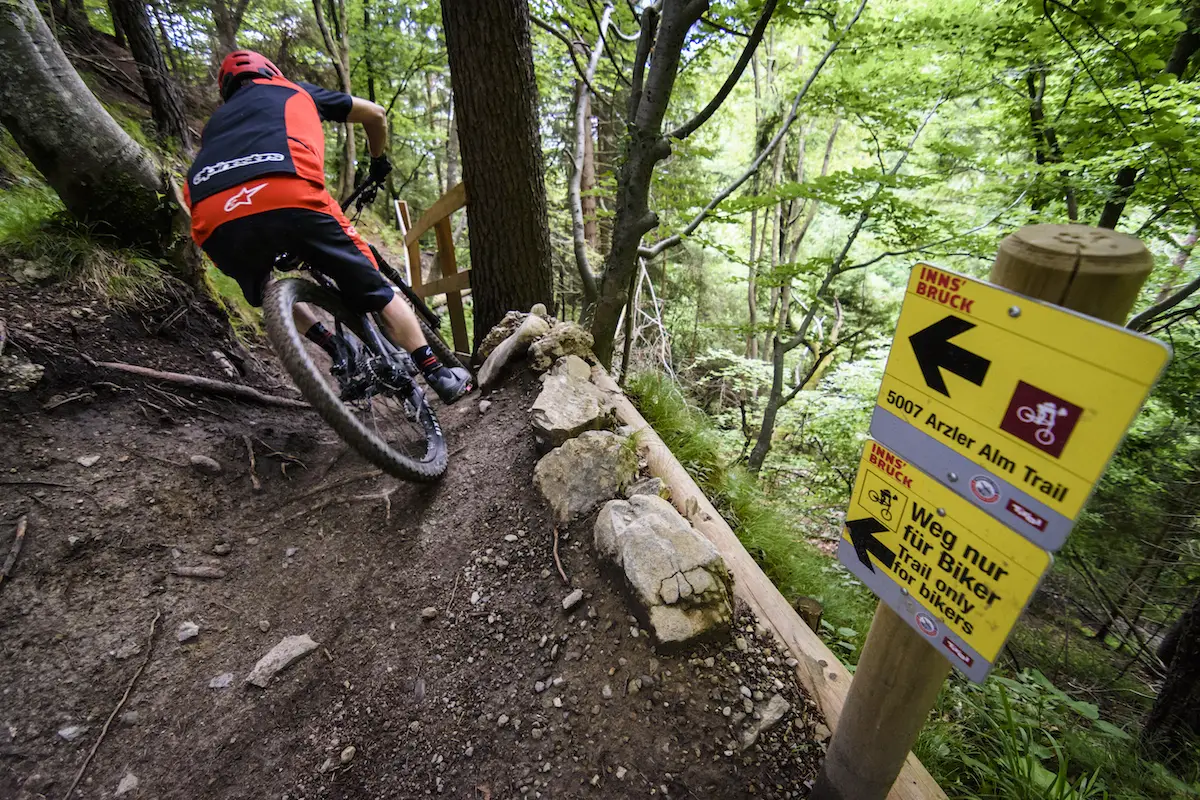
As for the Pike, I ran 76 psi to get me 30% sag while standing up on the pedals. I left the low-speed compression dial wide open for maximum compliance, and set the rebound two clicks slower than halfway. The Pike is, without doubt, a big performance enhancer for the Honzo, giving it an indestructible feel and arguably far too much confidence for sending it downhill. Its smooth sliding stanchions keep the front tyre connected to the dirt, and the chunky 35mm chassis sucks up the bigger showstopping hits very well – even when I hit full compression on multiple occasions.
Due to the light overall weight, the Honzo does require some management when hoofing along boulder-strewn trails. At faster speeds the stiff back end bounces around like the needle on a seismometer, though as long as you’re pointing the bars in the right direction the rear wheel follows obediently. This animated ride quality can be a little disconcerting if you’re used to plush full-suspension rigs, but if you don’t mind a bit of heart-fluttering action, the Honzo will happily tap dance its way down the trail with you.
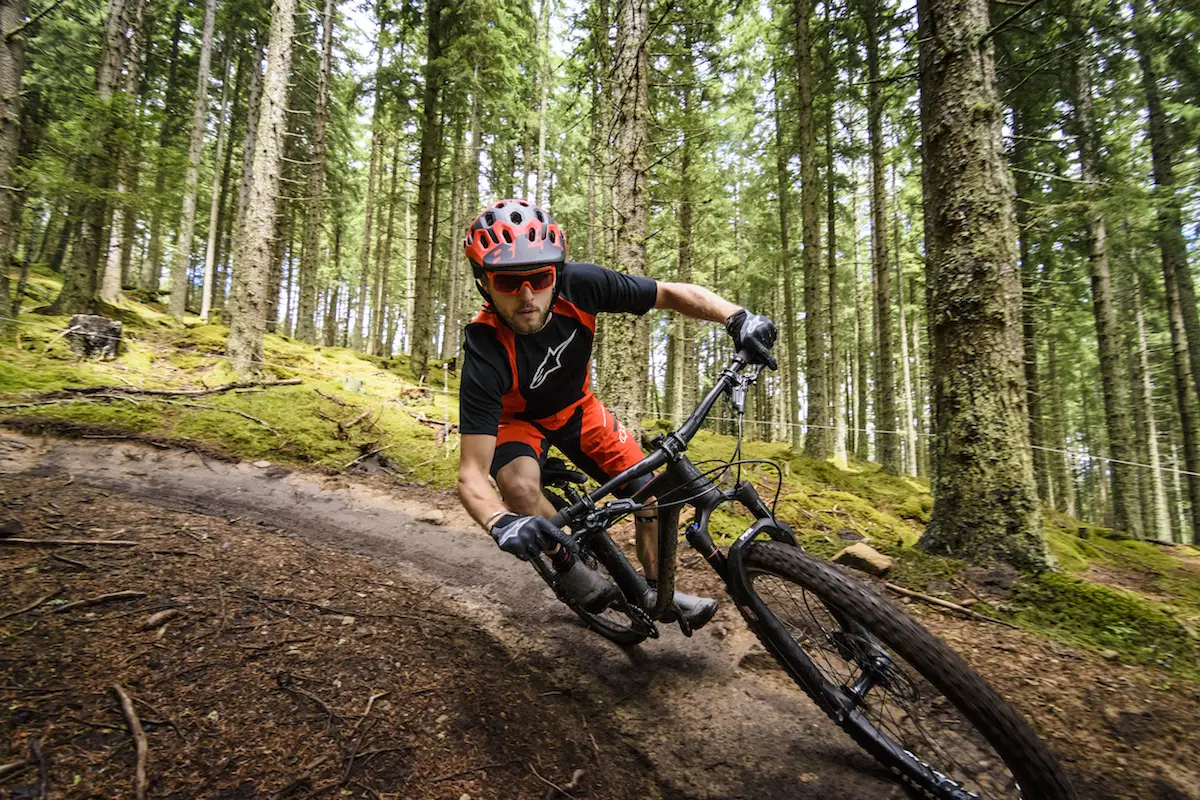
Admittedly, much of our test time on the Honzo was on far rockier terrain than it’s really suited for. Ultimately, this is a bike born to thrive on hardpack and loamy singletrack set deep in the forest, weaving its way around tree trunks like a black mamba snake. And on these types of trails, the snappy response of the laterally stiff frame, compact rear end and low-BB make it an absolute scream of a ride. Combined with its flickability, jumpability and acceleration properties, the Honzo encapsulates everything that is good about a hardtail.
Aside from a sticky KS LEV dropper post and creaky saddle rails, everything worked well on the Honzo. The SRAM Guide RSC brakes were brilliant, and easily the best on test with loads of power when required, but most importantly for a bike without rear suspension, sufficient control of that power to finely modulate speed. The 1×11 X01 drivetrain was quiet and efficient, and aside from the cassette coming loose on the first few rides and needing a quick tighten up, shifting was excellent.
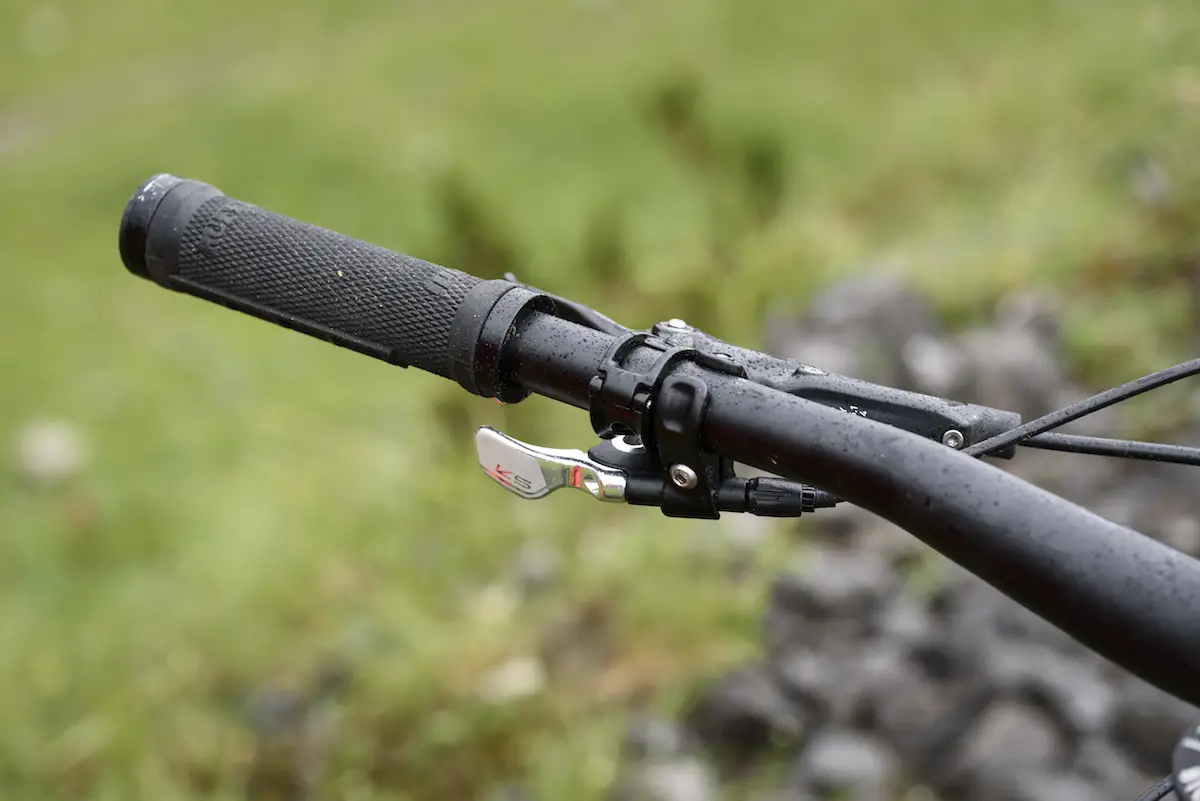
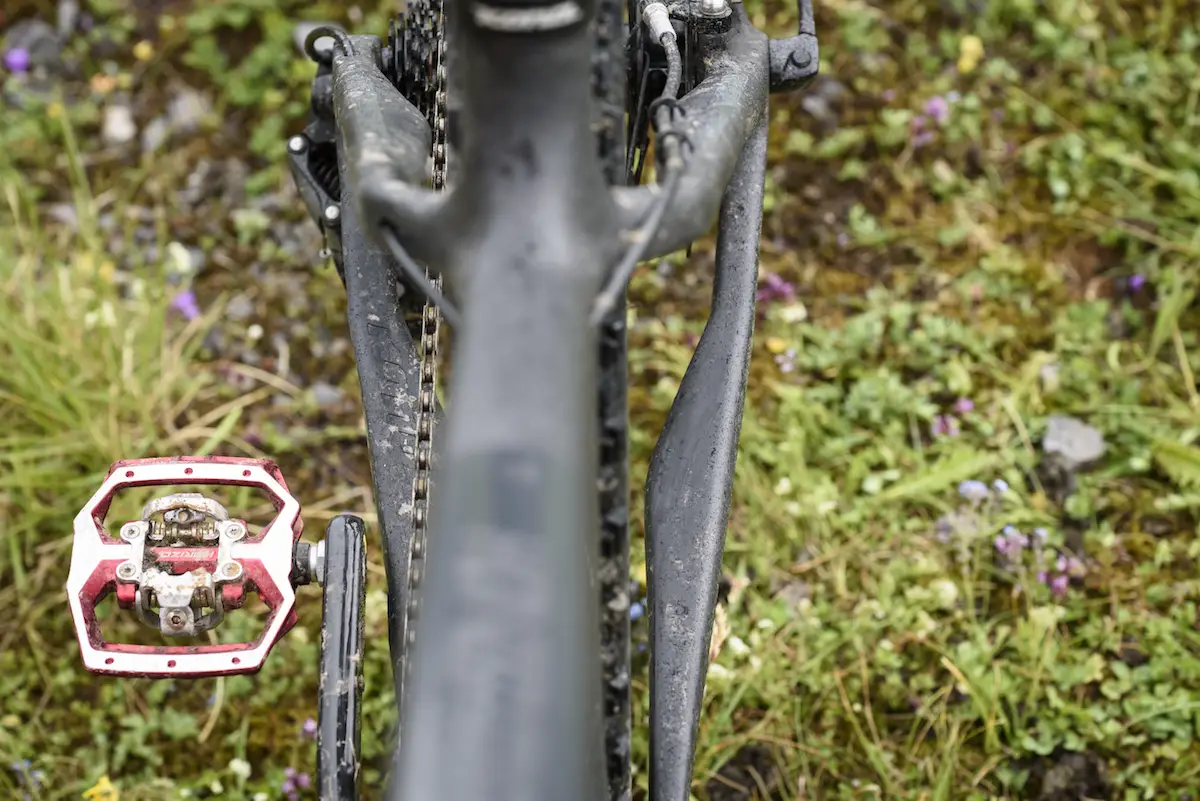
Overall
There is no doubting that the Honzo CR Trail DL is an expensive bike. You could buy four of the Nukeproofs for the same price, and it’s even £400 more expensive than Kona’s brilliant Hei Hei DL full suspension bike I tested recently. But if you measure value by words and numbers on paper, then you’re never going to be the rider that considers the Honzo in the first place. What Kona has done with the Honzo is craft a wickedly fast, fun and responsive ride that bends genres. Initially I would have said it’s a ripping ride for an XC hardtail, but then it’s just a ripping bike full stop.
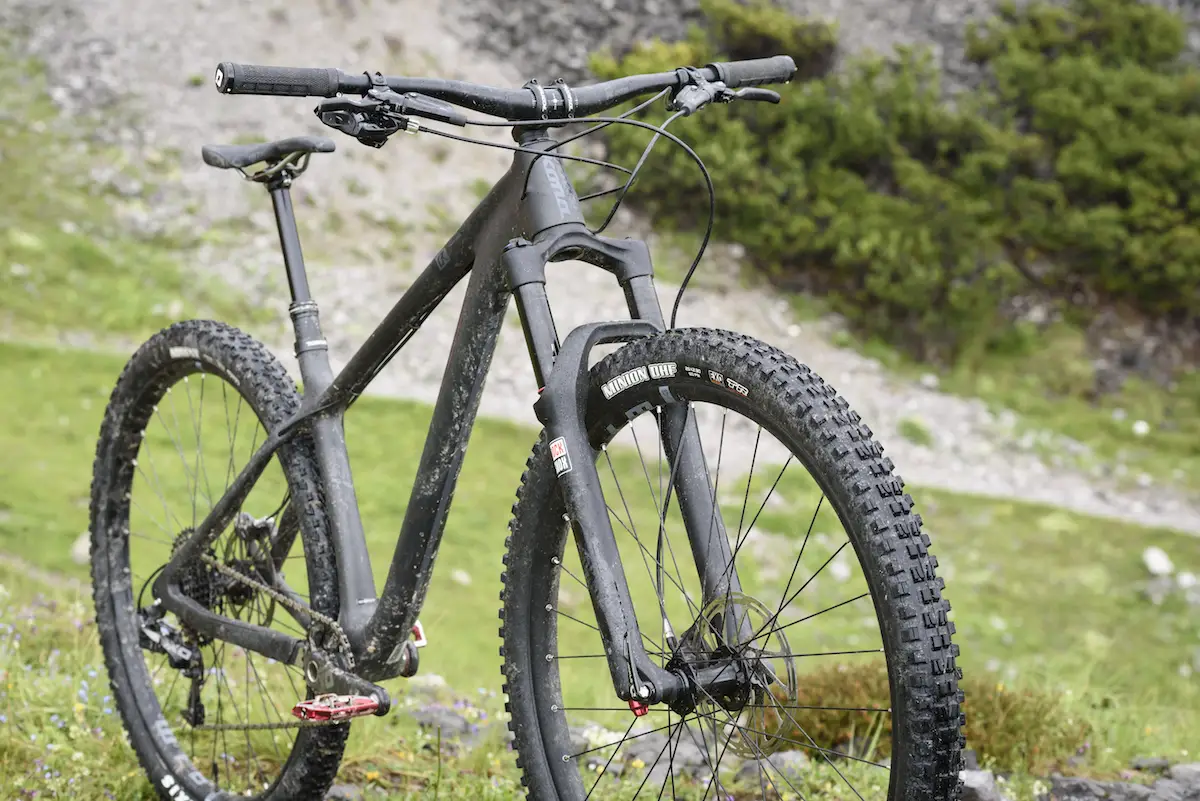
2017 Kona Honzo CR Trail DL Specifications
- Frame // Carbon Fibre
- Fork // RockShox Pike RCT3, 120mm Travel
- Hubs // SRAM 900, 110x15mm Front & 148x12mm Rear
- Rims // WTB Asym i23, Tubeless Ready
- Tyres // Maxxis Minion DHF EXO 2.3in Front & Ardent EXO 2.25in Rear
- Chainset // SRAM X01, 32t X-Sync
- Front Mech // N/A
- Rear Mech // SRAM X01 11-Speed
- Shifters // SRAM X01 11-Speed
- Cassette // SRAM XG-1180, 10-42t, 11-Speed
- Brakes // SRAM Guide RSC, 180mm Front & 160mm Rear
- Stem // Kona XC/BC 35, 45mm Long
- Bars // Kona XC/BC 35, 760mm Wide, 10mm Rise
- Grips // ODI Ruffian MX Lock-On
- Seatpost // KS LEV Integra, 31.6mm Diameter, 125mm Travel
- Saddle // WTB SL8
- Size Tested // Medium
- Sizes available // Small, Medium, Large, X-Large
- Weight // 11.3kg (24.86lbs)





You can’t make a statement like “Other numbers on the Honzo are similarly boundary-pushing” and then continue with “A 68° head angle”
Featherweight, in comparison to my bike.
@chrissyharding – It’s certainly not what I would call heavy!
@honourablegeorge – We can, and we did 🙂
It’s worth bearing in mind the parameters that the Honzo is playing in. Sure it isn’t slack compared to a Mondraker or a Geometron, but then this is a 29in carbon hardtail that weighs just over 11kg. Compare the Honzo to other popular bikes within that market, and it’s long reach, 45mm long stem, 760mm wide bars and 68° head angle are indeed boundary-pushing.
That said, we expect to see more brands adopt that new-school geometry for their hardtails, like Transition has done with the new Vanquish 29er hardtail.
Hope that helps explain, though just give me a shout if you’ve got any more queries about the Honzo!
ST Wil.